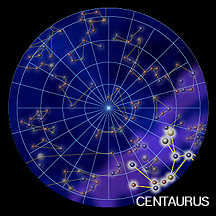The Constellation Centaurus, the Centaur
Click on image for full size
Centaurus - The Centaur
Below the stars of
Hydra, the sea serpent,
and
Scorpius,
the acorpion, you can find the half-man, half-horse creature,
Centaurus. He faces east holding a lance-like pole which he is using
to kill Lupus, the wolf standing in front of him.
Centaurus' brightest star (Alpha Centauri), is called
Toliman or Rigel Kentaurus. It's the third brightest star in the sky
and the closest star to the Sun. Alpha Centauri is really a triple
star: two components form a double star. The third component is a red
dwarf, more than 2 degrees away from the bright pair. It is called
Proxima Centauri (closest in Centaurus) because, of the three
components, it is the closest to Earth, only a little more than 4 light-years
away.
Centaurus is home to Omega Centauri (NGC 5139), the brightest and
largest globular cluster
in the sky. It is visible to the naked eye as a hazy spot of 4 minutes
of arc. It is one of the closest globular clusters, at only 17,000
light-years away.
According to Greek mythology, it was Centaurus who first fashioned the
constellations and taught humans how to read the sky. He placed a
picture of himself in the sky to guide the Argonauts on their search
for the Golden Fleece.
You might also be interested in:

How did life evolve on Earth? The answer to this question can help us understand our past and prepare for our future. Although evolution provides credible and reliable answers, polls show that many people turn away from science, seeking other explanations with which they are more comfortable.
...more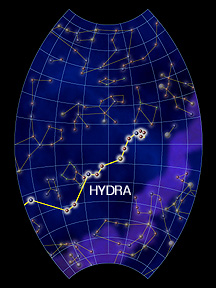
Hydra is the longest constellation in the sky (>90 degrees) and is also the largest in terms of area. It is so long that it takes more than six hours to rise completely. Along its northern side are the
...more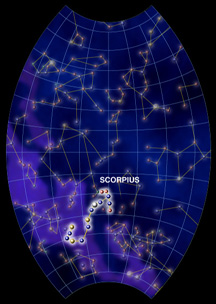
More than any other constellation, Scorpius resembles its given name. It is located low in the south for northern latitudes, but passes high in the sky for viewers in the southern hemisphere. The bright
...more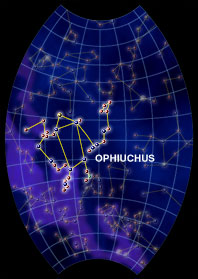
The constellation Ophiuchus represents the Serpent Bearer. This large constellation can be seen in the night sky from June through October. Although most of the stars are dim, Ophiuchus' teapot shape
...more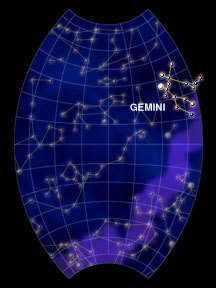
Gemini is one of the more famous constellations. The Twins are best seen during the winter and early spring in the Northern Hemisphere. If you live in the Southern Hemisphere, look for Gemini in the summer.
...more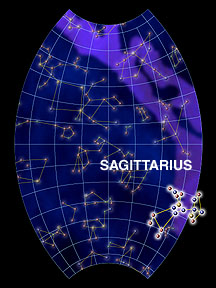
Sagittarius is a centaur, with the torso of a man atop the body of a horse. Unlike the wise and peaceful centaur Chiron (Centaurus), Sagittarius is aiming his giant bow at his neighbor, Scorpius. While
...more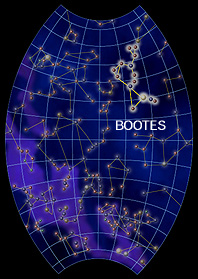
Bootes, the herdsman, rides through the sky during the late Spring and early Summer. While he may have appeared as a shepherd to the ancients, modern star-gazers like us can easily recognize the shape
...more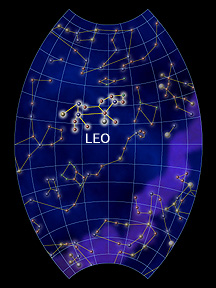
Leo, the Lion, is a very majestic feline. Leo's head and mane are formed by an asterism known as the Sickle which looks like a backward question mark. One of the brightest spring stars, Regulus (Latin
...more


